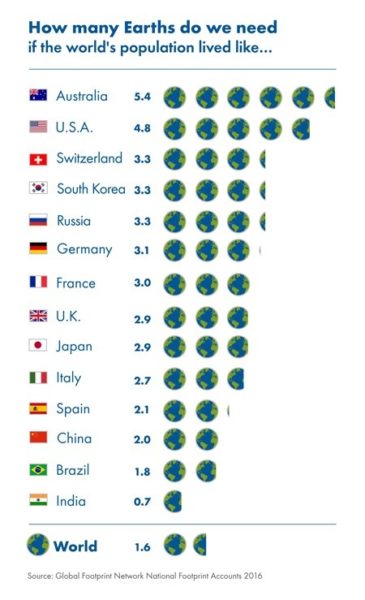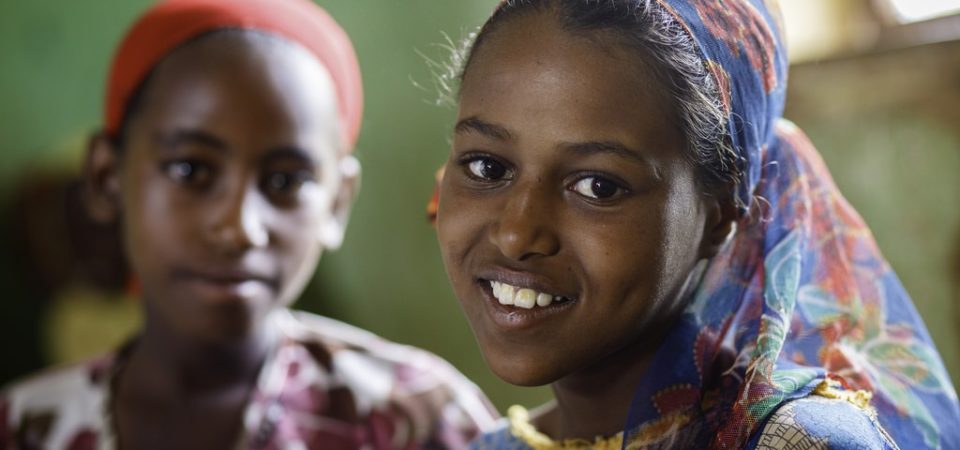This article was originally published via Transition Earth, it can be found here. A longer version of this article was written for the online magazine, ReImagining, published by the Chicago Wisdom Project.
Lately it seems as if the entire world is veering wildly off course. From climate change to species extinctions to rising inequality, many people – not to mention nature – are crying out for a better world.
Despite stark warnings, society blindly stumbles forward with business as usual, in the face of reality urging us to do something different. Humans are altering the planet in such a great way that scientists are considering changing the name of the current geological epoch to be called the Anthropocene.
The main driving force of the Anthropocene is an economic model based on endless growth, which includes an ever-growing source of consumers to buy more (unnecessary) products.
According to physicist and activist Vandana Shiva:
“The dominant model of economic development has in fact become anti-life. When economies are measured only in terms of money flow, the rich get richer and the poor get poorer. And the rich might be rich in monetary terms – but they too are poor in the wider context of what being human means.”
As for the environment, Dr. Shiva goes on to say, “However, economic growth hides the poverty it creates through the destruction of nature, which in turn leads to communities lacking the capacity to provide for themselves.”
The human footprint on the planet is undeniable. Consider the following statistics:
- Humans have cleared an area the size of South America to grow crops, and an area the size of Africa to raise livestock;
- Of the world’s 33 major river deltas, 24 are sinking due to flood-control efforts and other human-caused changes to the river systems;
- CO2 emissions totaled between 35 and 40 billion tons in 2015;
- 53% of the world’s fisheries are fully exploited, and 32% are overexploited, depleted, or recovering from depletion;
- Extinctions are about 1,000 times more frequent now than in the 60 million years before people came along – the current extinction rate is more on the order of 100 extinctions per million species per year.
What can be done to change course?
Here are three solutions that can help alter our current trajectory, and which challenge the concept of endless growth on a finite planet.
Making Connections
The first idea is making connections amongst diverse sectors such as conservation and health. A development model known as population, health, and environment (PHE) offers a holistic approach for supporting human rights and the rights of ecosystems to flourish. The PHE model goes beyond meeting the needs for contraception, reproductive health and general healthcare. It also incorporates conservation and management of the local environment. There are successful PHE examples in many places around the world, including in East Africa, Philippines and Nepal.
The Components of PHE:
- Population: the United Nations’ report World Population Prospects: The 2017 Revision predicts world population to reach 8.6 billion by 2030 and 9.8 billion by 2050.
- Health: access to healthcare and voluntary family planning services is especially critical for women. Globally, 214 million women want to avoid pregnancy but are not using modern contraceptives due to lack of access, information or other barriers. Addressing this need and reducing the rate of maternal and child mortality should be priorities for any country.
- Environment: the world is facing incredibly serious natural resource and environmental challenges. Often the best solutions to environmental problems are local and based on traditional knowledge.
PHE projects are most desirable in areas with threatened ecological landscapes and places where population density results in environmental pressures, and where demographic, health and/or poverty indicators are relatively worse than regional/national indicators, and government services are nonexistent or insufficient.
Rethinking Economies

Another solution for changing the business as usual approach is rethinking how economies are structured. In the words of economist Kenneth Boulding, “Anyone who believes exponential growth can go on forever in a finite world is either a madman or an economist.”
Conventional economic wisdom holds that global growth can continue forever, yet the reality of resource constraints is challenging this economic mantra. The world suffers from what author Naomi Klein has dubbed the “expansionist, extractive mindset.”
Implementing new ways of measuring growth that include the well-being of humans and the environment is one way to approach changing the economic growth paradigm. This includes measures such as Genuine Progress Indicator and Gross National Happiness. Another solution is an economic system in balance with people and the planet, such as a steady state economy or true cost economy.
Let’s take a closer look at the idea of a steady state economy. This type of economic system is described as having a stabilized population (birth rates equal death rates) and per capita consumption. The organization Center for a Steady State Economy defines it as an economy with stable or mildly fluctuating size. The term typically refers to a national economy, but it can also be applied to a local, regional, or global economy. An economy can reach a steady state after a period of growth or after a period of downsizing or degrowth. To be sustainable, a steady state economy may not exceed ecological limits.
Richard Heinberg, author of The End of Growth, addressed the question of how do we get from our growth-obsessed economic system to a post-growth world economy. He wrote that economist Herman Daly and other steady state economy supporters advise the following policies:
- a cap-auction-trade (or cap-and-dividend) system for extraction rights for basic natural resources;
- a shift away from taxing income and toward taxing resource depletion and environmental pollutants;
- limits on income inequality;
- more flexible work days; and
- the adoption of a system of tariffs that allow countries that implement sustainable policies to remain competitive in the global marketplace with countries that don’t.
It’s becoming clear that as conflicts rage around the world and more people struggle in the face of growing inequity and inequality, the answer to improving life isn’t more unsustainable economic growth.
Rights of Nature
Given the pressures of population growth, climate change, finite resources, and a planet already extended beyond its carrying capacity, the need to find sustainable solutions is urgent. Successfully addressing global problems will require a change in our way of looking at the world. One paradigm-shifting concept is recognizing rights of nature. This construct is a good way to bridge the concerns of environmentalists, human rights and women’s rights activists, and those concerned about stabilizing population growth.

Rights of nature laws eliminate the authority of a property owner to interfere with the functioning of ecosystems and natural communities that depend upon that property for their existence and flourishing. They do not stop all development; rather they stop development and use of property that interferes with the existence and vitality of those ecosystems. Respect for the rights of nature is the foundation for truly sustainable development.
It was once considered radical for slaves to have rights, as well as women. It took many years and a big shift for society to accept rights for people that made up a large percentage of the population. For too long, slaves, people of color, and women were viewed as property of white men. In much the same way, our industrialized and globalized world sees nature as only property.
Rights of nature has been recognized in the state constitutions of Bolivia and Ecuador and over 100 communities in the U.S. have enacted some form of rights of nature legislation on the local level. And in New Zealand, a river sacred to the Maori people has been granted legal personhood status.
How do we build the future we want?
Our current way of life is failing people and Earth. We must learn to live within our means and our planetary limits. This calls for rethinking society’s obsession with growth, be it population or economic. It high time that global society recognize resource limits, act together to move past unsustainable levels of economic growth, and respect the rights and well-being of all.
Suzanne York is Director of Transition Earth. In August of 2017 Transition Earth published a factsheet outlining The Anthropocene: Humanity’s lasting influence on Earth.
This article was originally published via Transition Earth, it can be found here. A longer version of this article was written for the online magazine, ReImagining, published by the Chicago Wisdom Project
The MAHB Blog is a venture of the Millennium Alliance for Humanity and the Biosphere. Questions should be directed to joan@mahbonline.org
MAHB Blog: https://mahb.stanford.edu/blog/global-growth-obsession/
The views and opinions expressed through the MAHB Website are those of the contributing authors and do not necessarily reflect an official position of the MAHB. The MAHB aims to share a range of perspectives and welcomes the discussions that they prompt.
